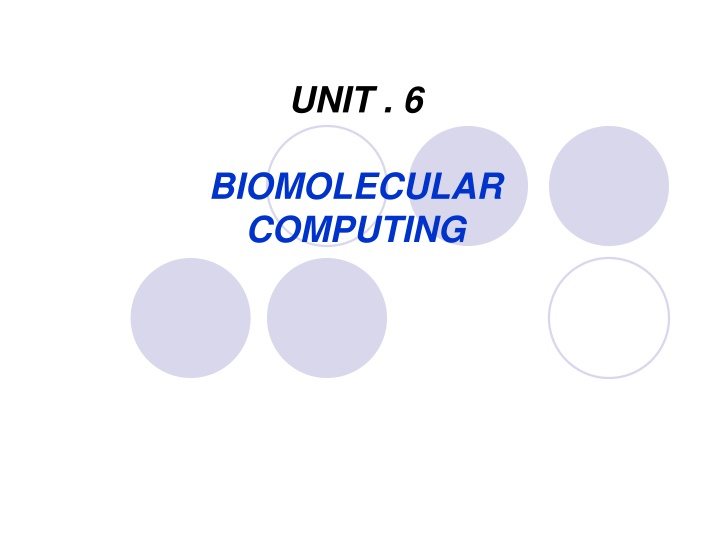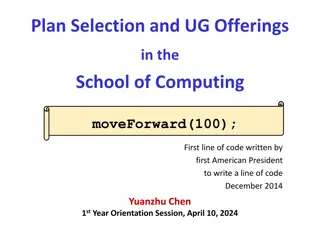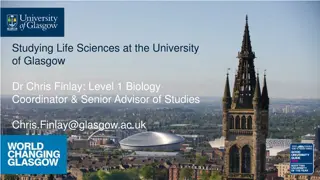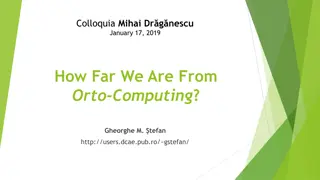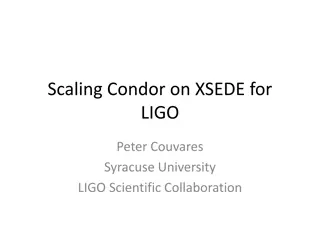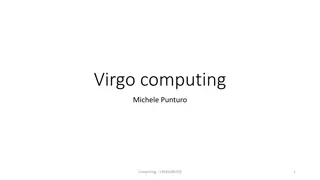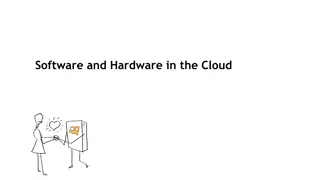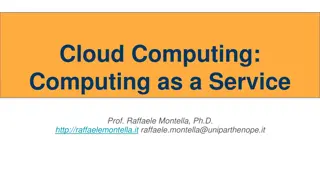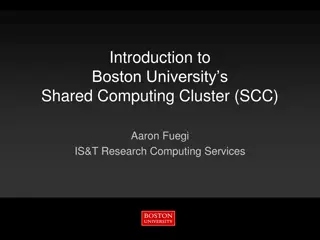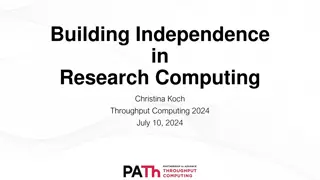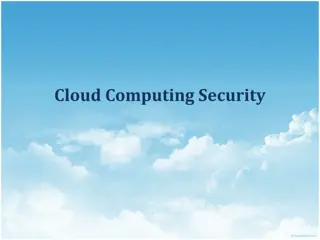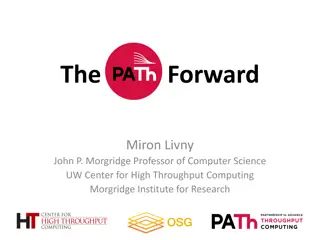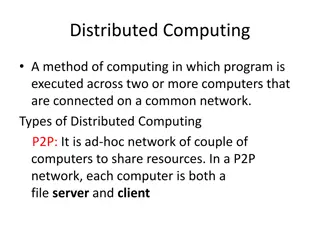Biomolecular Computing
Delve into the realm of biomolecular computing, uncovering the fundamental concepts of bio-molecules, the origin of biomolecular computing, advantages of DNA computing, challenges from Adleman's experiment, DNA computers, current research, and conclusions. Learn about the structure of DNA, instructions encoded in DNA sequences, DNA duplication, and the basics and origin of DNA computing. Discover the need for DNA computing due to the limitations of silicon-based computers, the dense information storage capacity of DNA molecules, and the potential for parallel computation using DNA.
Download Presentation

Please find below an Image/Link to download the presentation.
The content on the website is provided AS IS for your information and personal use only. It may not be sold, licensed, or shared on other websites without obtaining consent from the author.If you encounter any issues during the download, it is possible that the publisher has removed the file from their server.
You are allowed to download the files provided on this website for personal or commercial use, subject to the condition that they are used lawfully. All files are the property of their respective owners.
The content on the website is provided AS IS for your information and personal use only. It may not be sold, licensed, or shared on other websites without obtaining consent from the author.
E N D
Presentation Transcript
UNIT . 6 BIOMOLECULAR COMPUTING
Presentation Outline Basic concepts of Bio-molecules Origin of Biomolecular Computing Advantages of DNA Computing Problems with Adleman s Experiment DNA Computers Current research Conclusion
What is DNA? DNA represents the genetic blueprint of living creatures DNA contains instructions for assembling cells Every cell in human body has a complete set of DNA DNA is unique for each individual
Double Helix shape of DNA The two strands of a DNA molecule are anti parallel where each strand runs in an opposite direction. Complementary base pairs Adenine & Thymine Guanine & Cytosine Two strands are held together by weak hydrogen bonds between the complementary base pairs
Instructions in DNA Sequence to indicate the start of an instruction Instruction that triggers Hormone injection Instruction for hair cells Instructions are coded in a sequence of the DNA bases A segment of DNA is exposed, transcribed and translated to carry out instructions
Basics and Origin of DNA Computing DNA computing is utilizes the unique property of DNA for parallel computation. With an appropriate setup and enough DNA, one can potentially solve huge problems by parallel search. Utilizing DNA for this type of computation can be much faster than utilizing a conventional computer Leonard Adleman proposed that the makeup of DNA and its multitude of possible combining nucleotides could have application in computational research techniques
Need for of DNA Computing Conventional silicon based computers have a limited speed . Information storage capacity of DNA molecule is much higher than the silicon chips. 1 cubic nm of DNA = 1 bit information
Dense Information Storage The 1 gram of DNA can hold about 1014 MB of data. With bases spaced at 0.35 nm along DNA, data density is over a million Gbits/inch compared to 7 Gbits/inch in typical high performance HDD.
How Dense is the Information Storage? Check this out .. 1 gram = 4x10 21
How enormous is the parallelism? A test tube of DNA can contain trillions of strands. Each operation on a test tube of DNA is carried out on all strands in the tube in parallel ! Check this out . We Typically use 3 x1014
Steps for Adlemans Experiment Strands of DNA represent the seven cities. In genes, genetic coding is represented by the letters A, T, C and G. Some sequence of these four letters represented each city and possible flight path. These molecules are then mixed in a test tube, with some of these DNA strands sticking together. A chain of these strands represents a possible answer. Within a few seconds, all of the possible combinations of DNA strands, which represent answers, are created in the test tube.
Adlemans Experiment Hamilton Path Problem (also known as the travelling salesperson problem) DELHI BOMBAY TVM KOLLAM CHENNAI BGLRE Is there any Hamiltonian path from KOLLAM to DELHI?
In another experiment a simple version of the travelling salesman problem was solved . For this purpose, different DNA-fragments were created, each one of them representing a city that had to be visited. Every one of these fragments is capable of a linkage with the other fragments created. These DNA- fragments were produced and mixed in a test tube.
Within seconds, the small fragments form bigger ones, representing the different travel routes Specifically DNA has shown to have massively parallel processing capabilities that might allows a DNA based computer to solve hard computational problems in a reasonable amount of time .
Advantages of a DNA Computer Parallel Computing Millions of operations simultaneously Incredibly light weight Generate potential solutions Low power Efficiently handle massive amounts of working memory Solves Complex Problems quickly
What developments can we expect? Increased use of molecules other than DNA Some impact on molecular biology by DNA computation Increased error avoidance and detection Cross-fertilization among DNA computing, molecular biology, and computation biology
Conclusion DNA computing field is in its infancy stage, still the applications of this technology is not fully understood. This field as any other field has got many obstacles and drawbacks .
